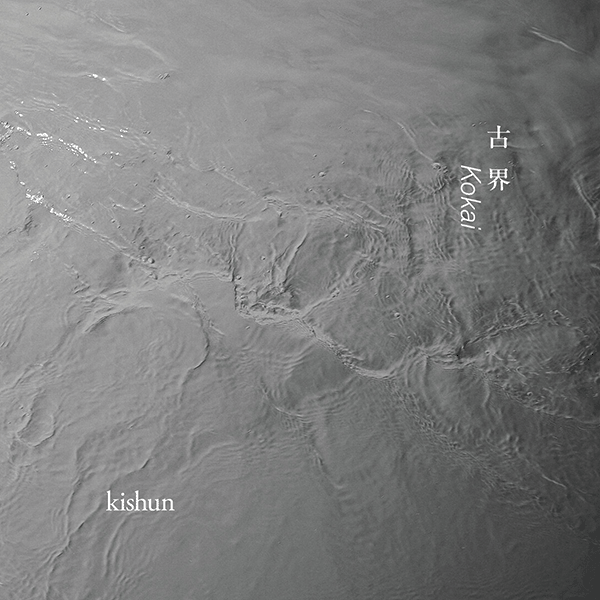
2025 10.19
Digital / Casette
Sho: ISHIKAWA Ko
Biwa: NAKAMURA Kahoru
Mastered by Daisuke Matsusaka
Design by Keita Shimamura
Text on the sleeve by ISHIKAWA Ko
Released by ato.archives
ata016
This release is a part of ato.archives’ traditional music series “Kawanosayo / 川の作用” and curated together with Hyotan Namaz.
Explanation about the album by Hyotan Namaz
kishun is a duo: ISHIKAWA Ko, player of the shō (mouth-organ), and NAKAMURA Kahoru, player of the gaku-biwa (Japanese court lute). Since 2015 they have used only shō and biwa. Their idea is to bring out the hidden sound in what they call “gagaku without melody.”
Gagaku is the ancient court music of Japan. It is more than a thousand years old. In the Heian period, nobles gathered old songs and dances from Japan and pieces that had come from Korea and China between the 5th and 9th centuries, and shaped them into one art. As gagaku took root in Japan, it was arranged and rebuilt. The form we hear today is unique to Japan. By the Heian era, it was already close to its present shape. Gagaku lives in two worlds: as court music at the Imperial Palace, and as sacred music for rites and festivals at temples and shrines. Because of this history, it was kept by nobles and professional musicians, away from the taste of ordinary people. Its instruments and dances are very different from most other Japanese traditions.
Gagaku has four main kinds: bugaku (dances, including those from the continent), kangen (an instrumental ensemble), kuniburi-no-utamai (old songs and dances from Japan), and utamono (vocal music from the Heian period). Among these, kangen is rare in Japan: it is a full orchestra made only of instruments. Most other Japanese music centers on singing. When there is instrumental playing, it is often in small groups or as support for theater and dance. Kangen stands apart.
The kangen ensemble is called “three winds, two strings, three drums.” The winds are shō, hichiriki (double-reed), and ryūteki (transverse flute). The strings are biwa and so (zither). The drums are kakko, taiko, and shōko (gong). The hichiriki and ryūteki carry the melody. The shō wraps them in chords. The string parts frame the rhythm. kishun plays only shō and biwa, both in classic pieces and in improvisation.
The shō is a free-reed mouth organ with 17 bamboo pipes of different lengths and pitches. Each pipe has a small metal reed. In the classic style, players do not use tonguing. They shape phrases with breath. The shō is not loud. In ensemble it plays long, steady chords called aitake. These chords color the melody and show the center of the mode (scale).
The gaku-biwa is a lute. Today it has four strings and four frets, and is played with a plectrum. Its back is flat and the body is shallow. Its sound is strong at the start, then fades quickly, with almost no ring. For this reason, the biwa speaks more in rhythm than in harmony.
kishun leaves out the melody instruments of kangen. They focus on the shō, which builds a field of sound through aitake chords, and the biwa, which draws the rhythm. This is their experiment: to bring forward the voices that hide behind the melody. With the skill of two masters, they reach this goal. Sounds that the full gagaku ensemble often covers without notice step into the foreground and speak to us in a fresh, striking way.
(*1) ISHIKAWA Ko — Studied shō and gagaku song with MIYATA Mayumi, BUNNO Hideaki, and SHIBA Sukeyasu. He began performing in 1990. He plays classic and new works with Reigakusha, a well-known gagaku group, and also performs as a soloist. He has taken part in many projects with artists such as SAKAMOTO Ryuichi and Evan Parker. He is also active in free improvisation.
(*2) NAKAMURA Kahoru — While at university, she met the revival of Bankaso (the oldest known biwa score, reconstructed by SHIBA Sukeyasu) and began to study gagaku. She studied ryūteki with Shiba Sukeyasu, and gaku-biwa and umai(right dance, a style with roots in the Korean peninsula and northeast China) with YAMADA Kiyohiko. A member of Reigakusha, she has performed since 1990 at festivals in Japan and abroad, and as a soloist. She also works to bring lost classic pieces back to life.
Hyotan Namazによる解説
kishunは雅楽の笙奏者石川高(*1)と、楽琵琶奏者の中村かほる(*2)によるユニット。笙と琵琶のみというミニマルな編成で、「旋律のない雅楽」に潜む響きを引き出すコンセプトで2015年から活動している。
雅楽は千数百年の歴史をもつ日本の伝統音楽で、もともと日本で古来より伝えられてきた歌や舞、5世紀から9世紀にかけて朝鮮半島や中国大陸から渡来した舞や器楽などを、平安時代の貴族がまとめ直したものが現代に伝わっている。大陸由来のものも、日本に定着する過程で、アレンジ・再編成されており、現在伝わる雅楽はどこの国のものとも異なる日本固有のものである。平安時代にはほぼ現在に近い形が整っていたと見られる。宮中で保護・演奏されてきた宮廷音楽としての顔に加え、寺社での法要・祭礼などでも演奏される宗教音楽としての顔も有する。そのような経緯から、貴族や楽人と呼ばれるプロの音楽家などの間で庶民の感性・嗜好から離れた形で伝承されてきており、楽器も舞も、日本の他の伝統音楽とは異なった特徴を多く有する。
雅楽の種目は、大陸から渡来した舞を含む「舞楽」、器楽の合奏である「管絃」、日本古来の歌や舞である「国風歌舞(くにぶりのうたまい)」、平安時代の声楽である「歌物」の四つに大別されるが、この中で、「管絃」は、日本の伝統音楽のなかで楽器のみのオーケストラとして体系化されているきわめてまれな形態といってよく、声楽が中心で、器楽合奏は、小規模編成か、演劇・舞踏の伴奏に用いられることが一般的な日本において異色の存在といえる。
「管絃」で使われる楽器は、三管両絃三鼓といわれ、管楽器(三管)では、笙、篳篥、龍笛、絃楽器(両絃)では琵琶、箏、打楽器(三鼓)では鞨鼓(かっこ)、太鼓、鉦鼓(しょうこ)となっている。旋律を担当するのは篳篥(ひちりき)、龍笛で笙は和音でそれらを包み込むのが主な役割、絃楽器はリズムに縁取りを与えるのが役割である。kishunはこの中の笙、琵琶のみで古典曲の演奏や即興を行っている。
笙は17本の長さ・音高の異なる竹管を束ね、下部に金属製のリードをつけたフリーリード楽器である。伝統的奏法ではタンギングは持ちいられず、息遣いによりフレーズを形成する。各管の音は大きくはなく、合奏における役割は、合竹(あいたけ)と呼ばれる持続和音を演奏することで、旋律を色付けし、モードの重心を示すことである。
一方、楽琵琶はリュート属の楽器で、現在使われているものは4絃4柱(4つのフレット)で、撥を使って弾く。背面は平坦で胴体は浅い。音の特徴として、弾いた瞬間は力強いが音の減衰が早く残響がほとんどない。その為、琵琶の役割は和音的というよりはリズム的である。
kishunは雅楽の管絃のなかで旋律を担当する楽器を含めず、合竹による音の場を作る笙と、リズムの縁取りを行う琵琶に絞ることで、旋律の奥に潜んでいた響きを引き出そうとするところに実験性がある。熟練の2名の技巧により、その狙いは十分に果たされ、伝統的な編成の雅楽では無意識のうちに覆い隠されていた響きは、前景に立ち現れ、斬新な姿で聴くものに語りかけてくるのである。
(*1)石川高 宮田まゆみ、豊英秋、芝祐靖に師事。雅楽の笙と歌謡を学ぶ。1990年より演奏活動を開始。雅楽団体「伶楽舎」に所属し、雅楽古典曲や現代曲の演奏を行うかたわら、独奏者としても活動。坂本龍一、Evan Parkerなど多くのアーティストのプロジェクトにも参加してきた。即興演奏にも積極的。
(*2)中村かほる 大学在学中、世界最古の琵琶譜「番假崇」(芝祐靖氏復曲)の演奏に出会い雅楽を学ぶ。龍笛を芝祐靖、楽琵琶・右舞を山田清彦に師事。「伶楽舎」所属。1990年より演奏活動を行い、国内外の音楽祭やソロでも活躍。廃絶された古典曲の復元にも取り組む。
